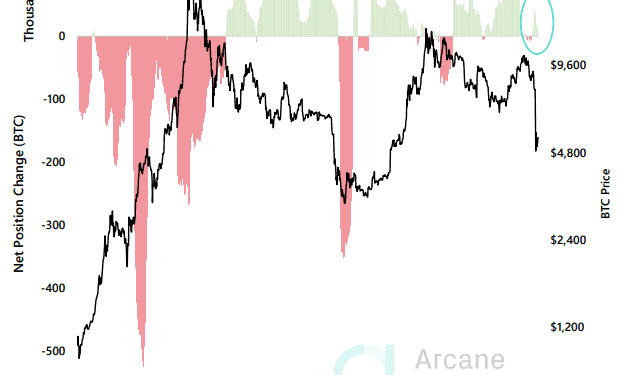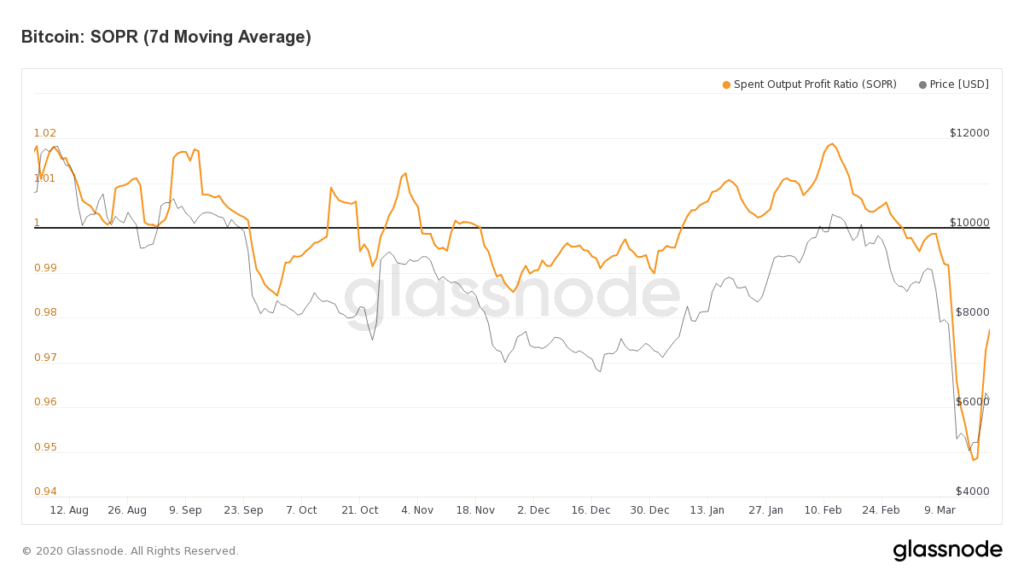The Bitcoin drop on March 12th-13th has been considered to be one of the worst sell-off in the past seven years. The asset’s valuation dropped from $7950 to $3800 in a span of 24-hours causing a major sense of panic in the digital asset space. Although the price jumped back to $4800 within the next day, the volatility levels caught a majority of the community off-guard.
In the hindsight, a massive buying proposition presented itself to the investors, and optimistic buyers did not allow this brief window of opportunity slipped through their hands.

According to Arcane’s recent report, it was indicated that the net position change for the average BTC holder’s sentiment has been positive since the massive slump on 13th March. From the above chart, it can be analyzed that investors were quick to flock in the market and improve their positions in the BTC industry.
With Bitcoin dropping as low as $4000 with optimistic holders entering the market, Coinmetrics’ Benjamin Celermajer suggested that the initial crash on 12th may have taken place due to short term Bitcoin holders.
In a series of tweets, the CMBI manager at Coinmetrics suggested that people who held Bitcoin for less than a year had cash-out their positions as the global financial market hinted at major risk of recession.
HODL Factor demonstrates that it still seems like most of the recent price action has coming from short term holders that acquired #Bitcoin in the last 12 months. Longer term holders (>1yr) still seem unmoved by the recent prices pic.twitter.com/p0TAl2eMqg
— Benjamin Celermajer (@CelermajerB) March 17, 2020
Hodlers who had held Bitcoin for a period between 30-120 days had significantly declined during the crash. However, Bitcoin Hodlers who accumulated Bitcoin over a year back remained unaffected in the market and failed to register any fundamental change to their holdings.
Bitcoin’s SOPR
An important Bitcoin metric that facilitated a decline after the crash was Bitcoin’s Spent Output Profit Ratio, which is used to measure the profitability of an investor in the market.

According to the chart, Bitcoin’s SOPR was below 1 at press time, which suggested that investors in the current market were incurring more losses than profit in the current market.
Whenever Bitcoin’s SOPR rating is above 1, users are more profitable on their investments on an average. This metric usually indicates to identify local bottom and tops over a short period of time.
Over the past few days, Bitcoin’s valuation has managed to consolidate above $6000 again, implying a possible bullish pump. With market volatility currently spiking high in the charts, Bitcoin’s SOPR may exhibit another trend reversal over the coming weeks.
